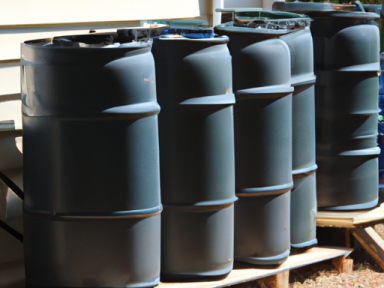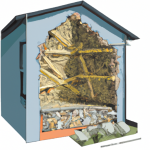Rainwater harvesting is a vital skill for anyone interested in homesteading, survival, or self-reliance. In today’s uncertain world, having access to a reliable off-grid water source is not just a luxury, but a necessity. With increasing concerns about the availability and quality of municipal water supplies, learning how to collect, filter, and utilize rainwater can mean the difference between thriving and struggling.
Collecting Rainwater
Collecting rainwater is the first step in establishing a rainwater harvesting system. Start by installing a roof catchment system, which directs rainwater from your roof into gutters and downspouts. It’s important to make sure that your roof is clean and free of any debris or chemicals that could contaminate the collected water. You can also consider installing a leaf guard or mesh filter to remove larger debris.
Next, you will need to choose a storage system for your collected rainwater. There are various options available, including rain barrels, cisterns, and underground tanks. Assess your needs and available space to determine the best option for you. Remember, the larger the storage capacity, the more water you can collect and store for future use.
Filtering Rainwater
Filtering rainwater is an essential step in ensuring its safety for drinking, cooking, and other household uses. A simple but effective filtering method is to use a combination of a sediment filter, carbon filter, and UV filter. The sediment filter removes larger particles, while the carbon filter absorbs chemicals and impurities. The UV filter eliminates bacteria, viruses, and other harmful microorganisms.
It’s important to regularly clean and maintain your filters to keep them functioning optimally. Regularly monitor the quality of the filtered rainwater by performing water tests or sending samples to a laboratory. This will help you identify any potential issues and take necessary actions.
Utilizing Rainwater
Rainwater can be utilized in various ways to meet different needs. Here are a few ideas:
- Drinking and Cooking: Treat your filtered rainwater with a water purifier to ensure it is safe for consumption. This will provide you with a consistent off-grid water source.
- Gardening and Irrigation: Use rainwater to nourish your plants and garden by connecting your storage system to a drip irrigation system or using a hose.
- Household Chores: Utilize rainwater for tasks such as cleaning, laundry, and flushing toilets to reduce your reliance on municipal water.
- Livestock and Animals: If you have animals on your homestead, rainwater can provide a valuable water source for them as well.
A Final Note of Preparedness
Investing in a rainwater harvesting system is not just about self-sufficiency; it’s about being prepared for the unexpected. Natural disasters, water scarcity, and infrastructure failures can all disrupt the regular supply of water. By incorporating a rainwater harvesting system into your off-grid lifestyle, you can be confident that you have a reliable water source, regardless of external circumstances.
Remember, taking action now is crucial. Don’t wait until a crisis strikes and water becomes scarce or unsafe to consume. Start planning and implementing your rainwater harvesting system today, and take control of your water security.




GIPHY App Key not set. Please check settings